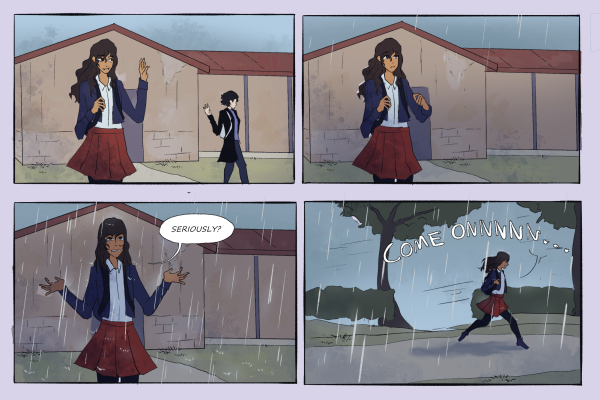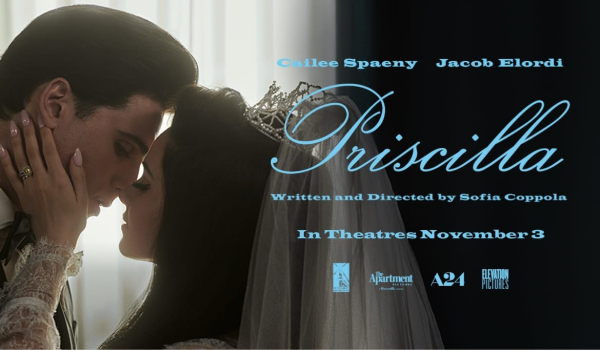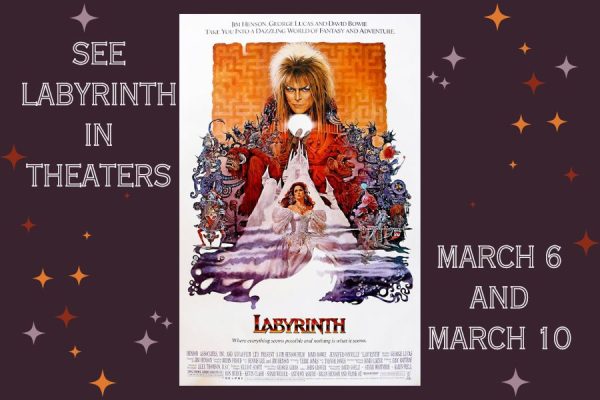Spider-Man: Far From Home
September 3, 2019
Spider-Man: Far From Home hit the box office as summer ended and quickly rose through the ranks of the top-grossing movies of all time. It was received well by critics and fans alike, reaching a 90% on Rotten Tomatoes and a 95% from the audience, but when companies such as Metacritic and IMDb give the movie a 69% and 79% respectively, that may be a sign that the movie may need a closer look.
Warning: There will be spoilers in this article
Following the events of Avengers: Endgame (2019), Far From Home had a lot to live up to, and had to serve multiple functions. Not only did it have to serve as a sequel to Spider-Man: Homecoming (2017), furthering the development of Peter Parker and his friends, but it had to serve as a sort of epilogue to Endgame, giving insight as to what comes next, and how the general population is dealing with the universe-shaking events that have transpired. Thankfully, the movie does both of these jobs wonderfully.
The announcement sequence at the beginning of the movie covers a lot of the bases that Endgame left open, acknowledging the loss of Tony Stark, Steve Rogers, Natasha Romanoff, and Vision, but also addressing the effects and rules of the disappearance of half of all life (so-called “The Blip” in this movie). We learn that people affected by the Blip didn’t age while they were gone, a very important aspect of this movie. We also are told that everyone who was snapped back appeared in the space where they disappeared, both things that were speculated upon, but not confirmed until now. This reminder of Endgame doesn’t end with the announcement, as the rest of the movie makes sure that you remember the last true sacrifice, Tony Stark.
From reporters asking Peter about him to his face graffitied on every blank wall in the city to the villain motives deriving from being mistreated by him, Tony Stark is absolutely everywhere in this movie without ever once actually appearing, which brings us to our first question: Was Tony’s portrayal in this movie done well, and was it too overbearing?
Before Captain America: Civil War (2016) came out, Peter and Tony’s relationship was never able to be explored in cinema, so for anyone who hasn’t read the comics, this is an entirely new aspect of both characters. It’s clear that in both movies, Peter idolizes Tony and Tony wants to keep Peter out of harm’s way. In Homecoming, the story revolved around Peter’s worth outside of the suit, a message fueled directly by Tony himself. In Far From Home, the same sort of narrative was there, but not as prominent. It’s more focused on living up to Tony and wanting to live a normal life. Seeing as Tony wasn’t actually there, they had to have his impact on the world more prominent. This was done mostly through constant nagging from “Nick Fury” (more on him in a bit), and through a pair of artificially intelligent sunglasses known as EDITH, then later, through the villain’s motivations.
Having the villain, Mysterio, tie back to Tony was definitely a good decision, as it put that extra burden on Peter’s shoulders, and gave Mysterio a bit more of a grating edge against the audience. With Tony having just died, it allowed Mysterio to slip into a similar position and touched a sensitive area with most of the audience. As viewer Jake Gyllenhaal put it, “The hope in Peter’s eyes as he saw him as a new [Iron Man] just crushed me cause Mysterio tricked Peter.” This, of course, refers to the event in which Mysterio, after receiving EDITH from Peter, plans to kill Peter and his friends with drones, all while pretending that he’s the hero. The fact that these events had such an impact on people shows just how good of a choice it was.
But what about Nick Fury and EDITH themselves? Well, Nick Fury is relatively simple, for the fact that he isn’t Nick Fury at all, but rather Talos, a shapeshifting Skrull that took his place for this movie. Since Talos knows almost nothing about Peter and hardly knows how to deal with the other Avengers, he had to resort to the only tactic that he felt could get under Peter’s skin: constantly bringing up the legacy Iron Man left behind. Now, this damages Peter in the long run, as shown by the scene on the jet with Happy, Tony’s security agent, where Peter breaks down, freaking out because he can’t live up to Tony and feels as if he’s put all of his friends in danger. Despite this, it makes sense that it was so prominent in this sense, and can be successfully dubbed as a good decision.
On the other hand, EDITH, a gift from Tony Stark, is a different story. Her role replaces that of Karen from Homecoming, an AI that Peter talks to throughout the movie and uses to enhance his abilities, but was that decision necessary? Well, for one, Karen existed exclusively within the first suit Peter received with Tony, and since Peter never wears that suit in this movie, it does make sense. Another reason for shoving Karen in the closet may also be due to her primary role being taken away. She acted as someone Peter could talk to as Spider-Man, but now that Ned and later MJ know that Peter is Spider-Man and since Peter isn’t working alone, Karen is no longer needed for this purpose. Her functionality as an ability enhancer is also overshadowed by the Iron Spider and the new suit Peter creates at the end of the movie, so that makes sense as well.
So if Karen isn’t needed, why is EDITH? Well, EDITH isn’t much for conversation, and all Peter really uses her for is setting a drone off on his rival and deleting people’s texts. Her real function comes from acting as a catalyst to Mysterio’s plans and the climactic battle. After her transfer, he uses her to get more drones to make bigger illusions and destroy more things, but he already had drones and a team of amazing scientists that could almost certainly have made more. The drone bus scene served little purpose in terms of the actual plot, as did the scene where Brad takes a picture of Peter changing in front of a seamstress. Sure, it developed Brad as a jerk, but it was sudden and could have been done a lot more steadily, if at all. Not every relationship rivalry has to have one side be blatantly a “bad guy”, and it would have been great to see MJ be able to have a personal preference out of two decent people, rather than have the plot force that decision onto her. This eliminates all need for EDITH beyond serving as a memento of Tony, but if that was all it needed to be, why couldn’t it be the Iron Spider suit?
It would have been a better decision if, instead of having Tony give Peter more danger in his life, Tony’s memento was the Iron Spider Suit. Peter’s Aunt May could have packed that instead of the other suit, and considering it’s a form of nanotechnology, could be easily transported and then passed on to Mysterio. The nanotechnology then could have been used to develop more realistic illusions/new drones, just like EDITH, and Mysterio would be able to simply upload commands instead of using an AI. So was EDITH needed? Not really, no. Tony’s influence would have still been present without her.
In conclusion, after analyzing the methods used to portray him, Tony’s presence in the movie was completely justified, although it could have been handled a little better in some areas.
The next topic to look into is the relationships present in Far From Home, and there are three main ones: Peter, Brad, and MJ, Betty and Ned, and May and Happy.
Starting with the least prominent, May and Happy’s relationship was teased a little during Homecoming but made a somewhat more official appearance in Far From Home. It’s used to create a little bit of awkward banter scattered throughout the movie, then disregarded at the end. During the climactic fight scene, Happy is hiding in a vault with four of Peter’s friends, and, thinking he’s about to die, declares, “I’m in love with Spider-Man’s aunt!” However, when Peter questions both May and Happy after the fact, May claims that they aren’t dating and that it was just a “summer fling”, despite the relationship being teased two years ago. Considering May blipped out and Happy didn’t, it would make more sense that Happy lost his initial feelings, if anything, but it turned out to be the other way around. Considering it added almost nothing to the plot, doesn’t make sense with previous events in the Marvel Cinematic Universe, and ended abruptly, there was really no reason for its existence.
Next is Ned and Betty, two kids who fall in love on a plane ride, then break up on the way back to New York. Considering the two have nearly nothing in common, it may have been an attempt to do a sort of “opposites attract” scenario, but really it just leaves questions to why they got together in the first place. From a writing standpoint, it seems to serve to distance Ned from a lot of the action, or, as viewer Joe Williams claims, “To jumpstart the relationship between MJ and Peter.” Now, Peter never seems jealous of Betty and Ned, and never really shows any negative feelings towards it. It also doesn’t seem to affect Peter’s attitude towards MJ in any noticeable way, and Ned doesn’t push on Peter to make a move, so it may not be to jumpstart Peter’s relationship with MJ rather than to poke fun at its current lack of success.
So if it was to push Ned away from the action, why did Ned need to be separated in the first place? Well, Ned is the self-proclaimed “guy in the chair”, serving as Spider-Man’s right-hand man, generally using computer systems to get him information. With the constant traveling that takes place in this movie, there really wasn’t a chair for Ned to be in. Even if there was, accessing information from a school library is significantly easier than messing with foreign technology, and they had Nick Fury and Mysterio take care of the spread of information for this movie. That being said, the way they removed Ned wasn’t exactly the best. His and Betty’s relationship only served to put them in danger and make comments towards each other that you’d expect out of a middle-schoolers assessment about what a relationship should be. Its attempts at humor weren’t the best, and the exchanges between the two seemed more like a deviation from the main plot. By showing nothing about them getting together or falling apart, it makes the relationship difficult to care about from an audience standpoint. However, admittedly, it could have been a lot worse. Never did Betty or Ned become overly obsessive or toxic towards each other. Betty allowed Ned to continue working with and talking with his friends (mostly Peter), and while it wasn’t shown, we can infer that Betty was taking time to be with her friends as well. It was a caring relationship and served its purpose fine enough, but it’s abrupt start and stop and its cheesy, unrealistic banter made it much less enjoyable than it could have been.
Lastly, we get to one of the main points in the movie, the budding romance between Peter and MJ, with the rivalry of Brad. The main issues of Brad switching from rival to straight-up jerk were already addressed, so we can focus on the two others. At the beginning of the movie, Peter has already made plans to confess to MJ, getting her a glass necklace and telling her how he feels on the Eiffel Tower. However, this plan is rejected by Ned, and things proceed to go south from there. Nonetheless, Peter and MJ do get quite a few cute interactions, and MJ even offers to save Peter a seat during the opera. Throughout the movie, they make it very obvious that Peter and MJ really like each other, even though MJ is much more subtle and chill about it. After finding out that the class won’t be going to Paris, and will instead be leaving back to New York, Peter hurriedly attempts to confess but is interrupted by both MJ figuring out his secret identity and discovering Mysterio’s intentions. It was a good choice to hold the confession for later, seeing as Peter immediately had to leave and it’s more in character for MJ to have wanted to dodge the topic. Their true confession comes after the climax, during which MJ received the necklace and was forced into a life or death situation that made her reevaluate herself and her choices. The end of battle rush of “I almost died and I need to tell you I love you” is a fairly common trope, but was done well in this movie, and gave way to an adorable after-credits scene. (Well, at least the first part of it.)
Which brings us to our last topic, the villain of the movie himself, Mysterio. Mysterio is one of many villains in the MCU to have a deep-seated hatred towards Tony Stark and using the events of Endgame, masks himself as a hero from another universe. (Since he just turns out to be a regular guy, we’ll have to wait for Doctor Strange to show us more of the multiverse.) His main goal in the movie is to pass himself off as a hero with illusion tech so that people will respect him, and his plan requires the death of thousands of people, but he makes something very clear: he does not want to kill Peter or any of Peter’s friends. He and Peter have some genuine conversations before his villain reveal, and they do form a bond despite his ulterior motives. When he finds out that one of his projectors fell into the hands of MJ and Peter, he verbally explodes, threatening all of his workers and telling his right-hand man, “[Peter’s] blood is on your hands!” However, he understands that he can’t have any loose ends, and gets straight to work on finding Peter and figuring out just who knows about his identity.
Now, some questions you may be asking are, “If Mysterio really had sympathy towards Peter and didn’t want to kill him, why did he torture him, why did he absolutely go overboard with the drones, and why did he ruin Peter’s life?” Well, after receiving EDITH, Mysterio has no more positive interactions with Peter, and actually spends most of his time away from him. He submerges himself into his false identity, and his lust for power grows with each advancement and setback he faces. His sympathy for Peter is absolutely gone by the climax, but the feeling goes away slowly. For most of the movie, Mysterio has convinced himself that he feels bad for Peter. His next interaction with Peter comes in the form of the ever-popular illusion scene, where his main goal is to force Peter to back down. It’s very possible that at first, knowing how strong Peter is, Mysterio believed that this was the only way he could deal with him, but as the illusion goes on, it gets more personal, more sadistic, working Peter up until he’s choked out the information that Mysterio needed to know. This was when Mysterio’s sympathy began to end, but well before he began to get angry with Peter.
During the climax, Peter dives inside the illusion and begins to fry and disable the drones. It was at this point Mysterio realized he might not win the fight, and started to formulate a plan to ruin Peter’s life. Peter ends up defeating Mysterio (or more accurately, Mysterio shoots himself like an idiot) and before he dies, Mysterio tries to remind Peter of their previous bond and trick him, which ends up in Peter seeing through the illusions and keeping himself safe, but Mysterio’s wrath doesn’t end there. At the peak of his anger and the depths of his sympathy, he ruins Peter’s life by revealing his secret identity and framing Peter for the elementals through a news broadcast.
Overall, it was a well-done progression of the antagonist’s mental state, and certainly better than some of the things Marvel has done in the past.
After taking a deeper look at some of the aspects of this movie, it certainly has its flaws but is a well-written movie deserving of the praise it got. It had a lot to fill after Endgame but was a fun-filled and action-packed movie experience that could be recommended to any Marvel fan, new or old.












